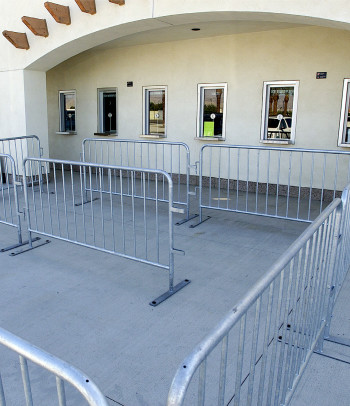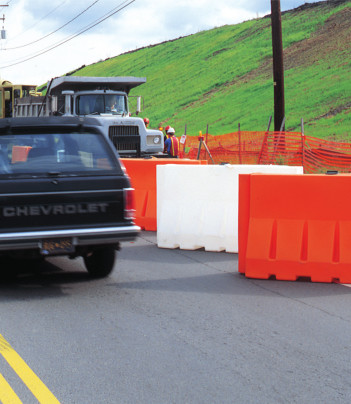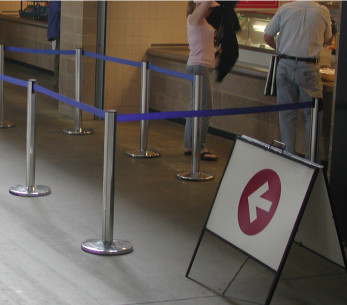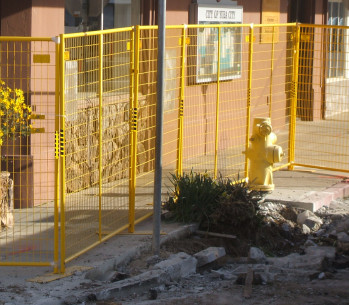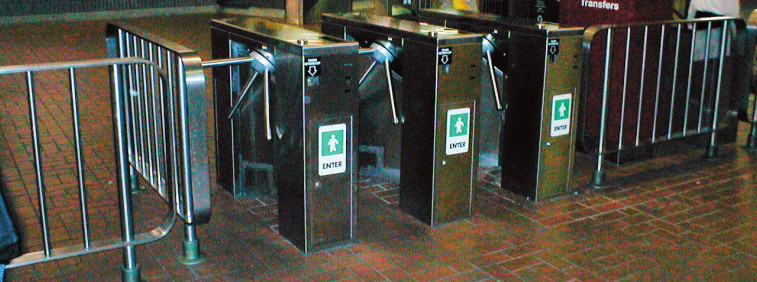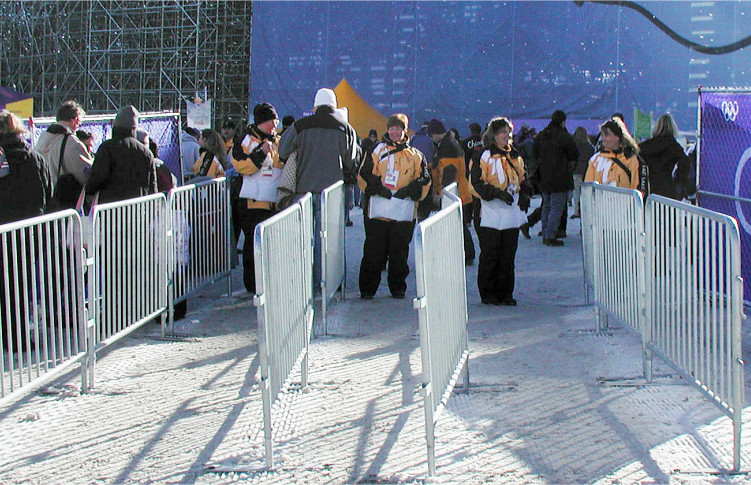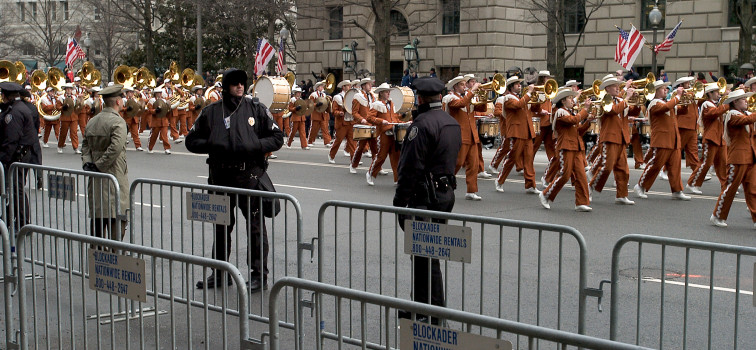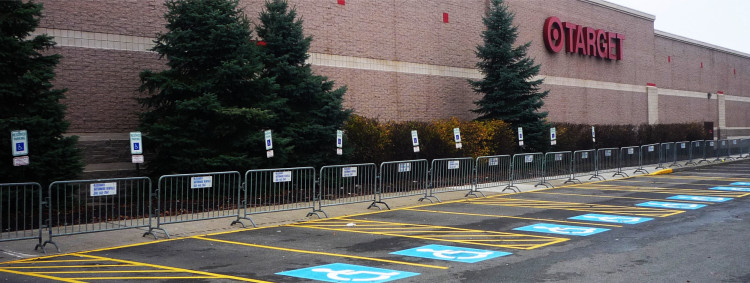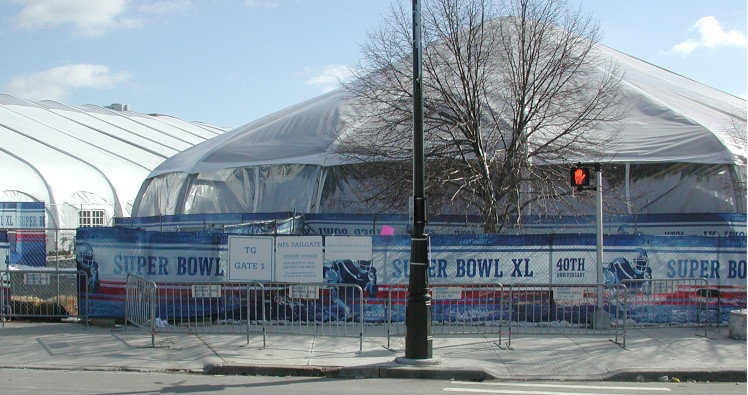Introduction to Crowd Control Management
As the size of public and special events grows, the planning role becomes more difficult for event organizers. In addition to making basic preparations for an event, organizers must also take public safety and security needs into consideration and be prepared to respond to anything that jeopardizes the safety and welfare of the attendees and staff. To minimize risks, organizers must maintain sufficient safety precautions which are appropriate for the number of people attending the event. The bigger the event, the larger the security needs.
Because of injuries and deaths which have occurred at various events, event organizers are open to a new level of risk and liability. The ability to manage and control the people at any event, large or small, is a make-or-break factor in special events planning. Using effective principles, event coordinators can properly manage and control attendees and increase their chances of hosting an event free of safety problems.
To create a successful crowd management plan, a thorough analysis is needed for these factors:
- The type of event
- The attributes of the facility or location
- The size and makeup of the crowd
- Entry and exit points
- Communications
- Effective crowd control practices and tools
Effective crowd management occurs throughout the event, from pre-event to post-event. Prior to the event, advanced planning and training are needed. During the event, organizers focus on handling the internal and external crowds and providing security. After the event, responsible parties should regroup and document the lessons learned in order to plan for future events.
The purpose of this article is to provide information that will help event planners and organizers create an effective crowd control management plan. This paper will provide an overview of crowd management practices, explore the use of crowd control barriers and related products, and look at case studies of successful crowd management at major events.
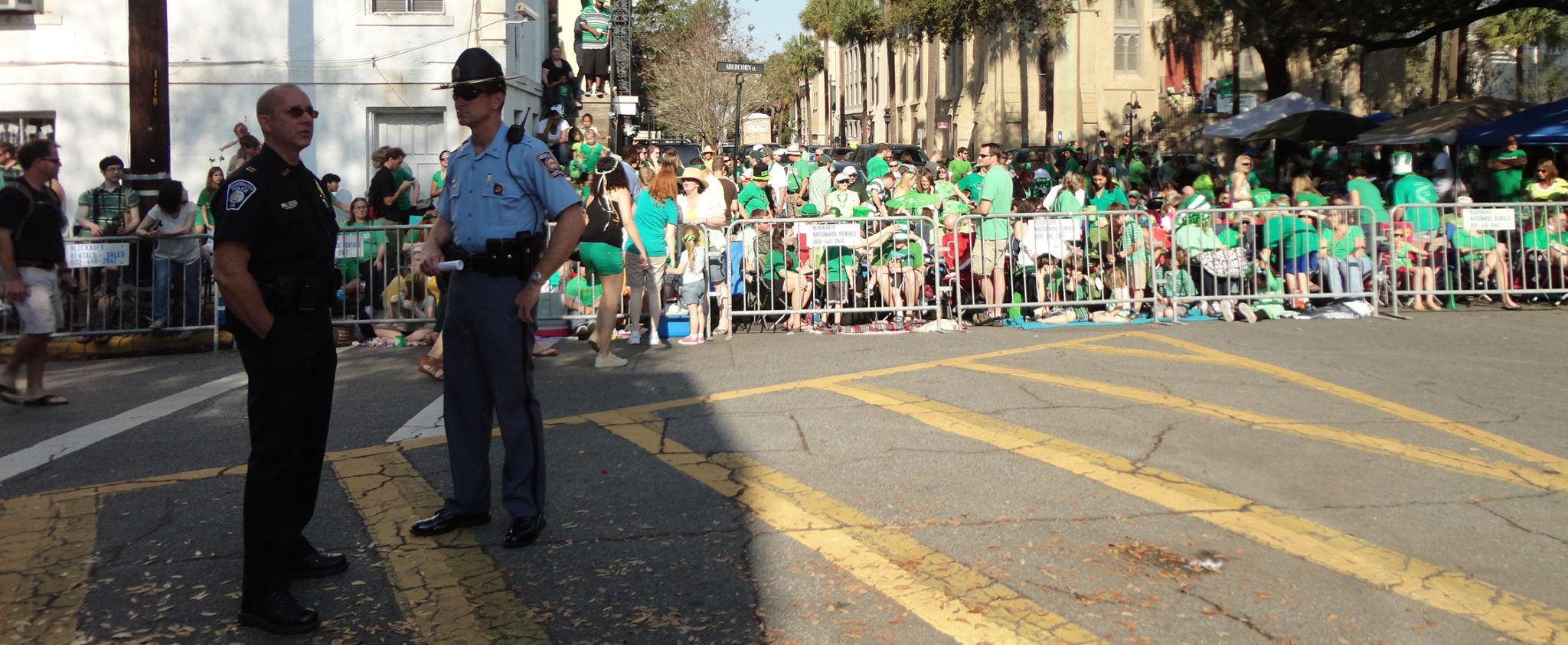
The Crowd Management Planning Process
Creating a crowd management plan, and identifying the appropriate tools to carry out that plan, is critical for the success of an event. The International Association of Venue Managers identified the crowd management plan as a crucial part of any risk management plan.
The event planning process encompasses more than just ensuring that people are having a good time. Organizers plan every detail of an event – basic layout, structural installations, security, ticketing, parking, entry and exit points, and staffing.
An event organizer can craft a well-suited crowd management plan by following the principles established by other event organizers, and by accurately assessing the scope of the event, the threats posed to attendees, and the impact on the surrounding community.
Planning should incorporate consideration and understanding of the following:
- Event type (concert, charity event, political rally, etc.)
- Location (indoor, outdoor, urban or rural)
- Crowd size and demographics
- Architectural and environmental concerns (seating, perimeter fencing, and barricades)
- Security concerns
- Entrance and exit points
- Vehicle entrances and parking
- Ticketing processes
- Restroom facilities
- Concession needs
Planners can employ different strategies and tactics to address each of these areas. The nature of the event will dictate which crowd management products should be employed. Strategies for a charity run will be much different than those for a national political event. Indoor events will have different requirements than outdoor events.
The single most complicating factor for any event is the crowd. A top priority for any organizer is to identify and minimize the potential risks posed by and to event attendees. The potential for human loss, as well as economic loss, making this a serious concern. The ability to direct the movement of the attendees throughout the venue, with the goal of mitigating personal harm and property loss, is accomplished through effective crowd management.
Pre-event Planning
Crowd management begins long before any person enters the facility or location. All staff associated with the event should be well-trained on security measures and crowd management requirements. Staff should be given protocols and manuals for guidance. The guidelines should provide information on the building’s layout, entry and exit procedures, rules of the venue, safety instructions, and evacuation plans. A chain of command should be laid out to include public safety staff and event staff inside and outside the event. Communication plans should also be provided to ensure that the lines of communication remain open for all staff during the event.
The Entrance
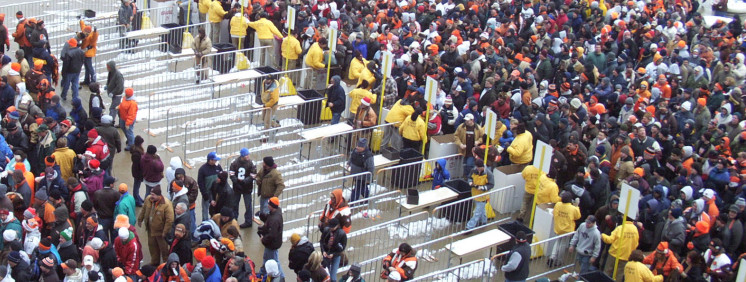
Depending on the size of the crowd, attendees may need to be queued up for entrance to the event. The entrance process can be handled with relative ease by the use of a queuing system, such as a stanchion and belt system. If attendance numbers need to be monitored, turnstiles can be used to keep an accurate count.
Opening extra entrances can minimize the crowd size and wait times. Additional measures needed for the comfort of the guests – including restroom facilities, water stations, and refreshments – should be planned.
Traffic
The Department of Justice’s Office of Community Oriented Policing Services issued guidelines for traffic planning in its publication Planning and Managing Security for Major Special Events: Guidelines for Law Enforcement. Among its recommendations, effective traffic control was cited as a key planning point.
Outside the venue or event, provisions must be made for vehicular entry and parking, including signage and staff to help direct traffic flow. Vehicle traffic can be directed through a series of channelized plastic barriers and ushered into appropriate parking spots by event staff. Pedestrian traffic through the parking lot and to the event site can also be guided by a plastic barrier walkway system.
Facility maintenance, and exit procedures
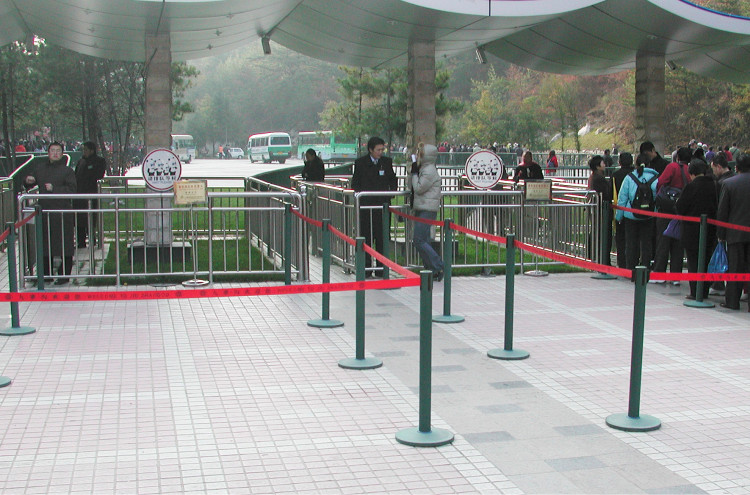
When the event is over, gating and fencing systems can keep crowds moving out of the event. All entrances can be turned into exit points if the layout allows for it. If there is an emergency, all entrances and exits can be opened to evacuate the crowd. In the parking lot, the flow of traffic can be reversed out of the lot and onto the streets through the same barrier system.
While this is not an inclusive list, it highlights some of the planning issues an organizer should consider. Event organizers can protect against security risks and public safety concerns by utilizing a well-orchestrated crowd management plan that incorporates the use of barriers and other security measures.
Types of Crowd Safety Systems
Numerous products can be used as crowd control and crowd management tools. Several crowd control system options are available for special events. The most common products include crowd control barricades, plastic barriers, line management systems, temporary fencing, and entry control systems.
Crowd Control Barriers
One of the most established crowd control and management tools used by organizers is the interlocking steel barrier. These crowd control barricades provide both a physical and psychological line to keep people out of an area or to direct crowd movement. Interlocking steel barriers are used along parade and marathon routes, at sporting events, political rallies, concerts, outdoor festivals, and other areas where large crowds gather. They come in standard sizes (1 meter, 2 meter, and 2.5 meter) and can be interlocked to create a unified line of varying lengths. When interlocked, the barricades are sturdy enough to keep people back without falling over.
Barriers have been used at numerous political events and rallies to provide adequate safety zones for the attendees (or, in some cases, demonstrators). The barriers provide additional capabilities for law enforcement to move crowds back or provide containment should a crowd surge or riot occurs.
Plastic Jersey Barriers
No longer used solely on highways, Plastic Jersey barriers have evolved to provide an effective solution for pedestrian and vehicle traffic flow at special events. Manufactured by several different companies under various names – including Jersey barriers and Rhino barriers – these barriers can be used to cordon off special areas, aid in the movement of attendees, and provide additional perimeters for events. Made of heavy duty plastic, they can be filled with water or other materials to provide additional stability.
Plastic barriers are available in different sizes and shapes. They are sturdy enough to hold back crowds and safely direct the flow of the attendees, but light enough to be moveable. These barriers are also cost-effective because they offer less labor-intensive installation and can be transported to and from an event and reused at future events. They can also be used to direct the flow of vehicular traffic into parking areas and into entry and exits points.
Belt Barrier Stanchions
Portable stanchions (posts), connected via retractable belts or rope, create visible, orderly lines. Attendees will know where the line begins and they will efficiently navigate from the beginning of the line toward the point-of-service. The posts can also be set up to block off no access areas, providing patrons with a clear visual message of a closed-off part of the facility. This line management system is easily adjustable to meet just-in-time needs, and lightweight enough to be easily moved from one location to another when necessary.
Temporary Fencing
Temporary fencing products provide event organizers with the ability to clearly and securely block off areas. Fencing can be provided in chain link or welded wire panels, or in fencing that can be rolled out.
Wire and mesh panel fencing is traditionally used to provide security protection around the perimeter of the event. The fencing is constructed for durability and is difficult to climb or penetrate. The fencing is also easy to install and remove.
Turnstiles
Many events feature turnstiles at their main entry points, as well as the entrances/exits of other areas such as souvenir/merchandise stores. By providing access control, turnstiles increase the overall safety of an event. They also provide data on the number of people at an event, enabling organizers to stop entry if crowd levels get too high or become unsafe.
Examples of Crowd Control at Major Events
With extensive planning, effective crowd control tools and techniques can be successfully implemented at any event. Modern sporting and international special events have provided numerous examples of deftly executed safety and security plans, resulting in secure yet enjoyable events. The following examples showcase a few of these successful implementations.
Crowd Control at the Olympics
The Olympic Games provide a unique logistical and security concern for its planners. The games bring together participants and spectators from several nations in a confined location. Because of the international nature of the event, the Olympics pose heightened security and safety challenges. Hundreds of thousands of people attend the games. Protecting the safety of the athletes and the spectators is critical. Organizers must layout the facilities to provide restricted areas for the athletes as well as safety zones for the spectators. Over the past several years, a number of crowd control techniques have been put in place to minimize the risk of personal harm and property damage.
Jersey barriers have been used at multiple Olympic Games to ensure the safety of participants and attendees. The barriers have been used to provide safe zones and perimeter security. In 2010, concrete and plastic Jersey Barriers were used as an anchor for a tall chain link fence to surround the entire Olympic village. Barriers were also used throughout the facilities to direct the flow of attendees. Because of the heightened threats of international terrorism, these barriers provided an additional safety measure to protect against blasts.
In addition, organizers used interlocking steel barricades throughout the event areas to manage the crowds and keep them away from the athletes during the competitions. Using crowd control strategies identified from previous Games, the hosts provided a safe environment without detracting from the entertainment of the attendees.
Crowd Safety at Presidential Inauguration Ceremonies
The inauguration of a U.S. President presents unique challenges for national security and general public safety. The possibility of an intentional attack is always present. The President-Elect, the president’s family, and other invited guests must also be set apart from the attendees. Jersey barriers and interlocking steel barriers have been used at the Inauguration Ceremonies since 1993. Proper planning and the use of crowd control barriers have ensured that the ceremonies remain open to the public and that no harm has come to the attendees.
Shopper Safety at Black Friday Promotional Events
In November 2010, Old Navy announced a Black Friday door-buster deal. With a $25 purchase, customers received a free Xbox 360 Kinect “Dance Central” game for free. During the debut of this new game, stores also provided an opportunity for customers to try out the game in-store. Line management posts with retractable belts were utilized in 400 stores. The barriers kept crowds back from the dancers and provided a queuing system for the customers purchasing merchandise. Event organizers created a safe environment with the simple use of barriers.
The Tamis Corporation: A Crowd Control Leader
To ensure safety and security at events, it is important to not only choose the right solutions but also the right supplier – one that provides a range of products and industry expertise. Special event organizers may benefit from the expertise and experience of the Tamis Corporation, which has been a leading supplier of crowd control products for nearly 30 years.
Tamis provides a wide variety of crowd control, traffic safety, and perimeter security products, including:
- Crowd control barricades
- Plastic Jersey Barriers
- Temporary Fencing
- Line Management Systems
- Traffic Safety Products
Tamis established itself as a leader in the industry by manufacturing and distributing high-quality products for a range of needs. All of the products offered by Tamis have undergone rigorous testing standards and are the most trusted products in the industry. Each product is available in customizable configurations, and all are available for rent or purchase. The company also provides easy online ordering capabilities with direct shipping options.
Tamis is known for its expert customer service, helping customers from the start to the finish of their event. They have provided guidance on numerous events – including Olympic Games, Super Bowls, and international marathons. Their proven track record with crowd control systems can be put to use by organizers of any event, large or small.
Conclusion
Crowd control and event management require careful planning and precise execution. Improper or inadequate crowd management and control can result in tragic losses and injuries. Organizers need to be aware of the risks posed at events and take the steps to avoid those risks. The use of crowd control barriers has been proven to be effective at many major special events. By choosing the right crowd control system and the right supplier, event planners will maximize their potential for hosting a safe and secure event.
